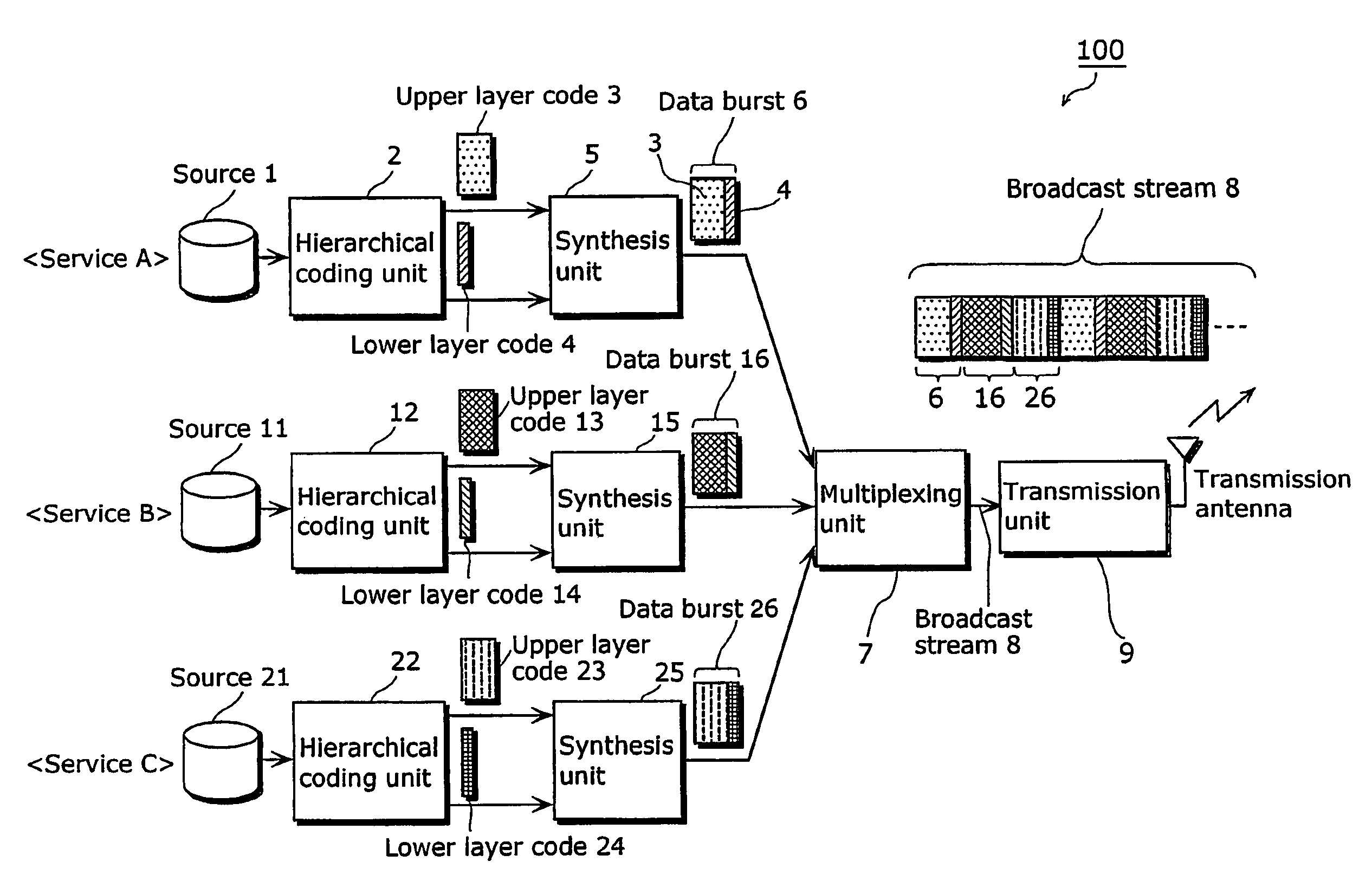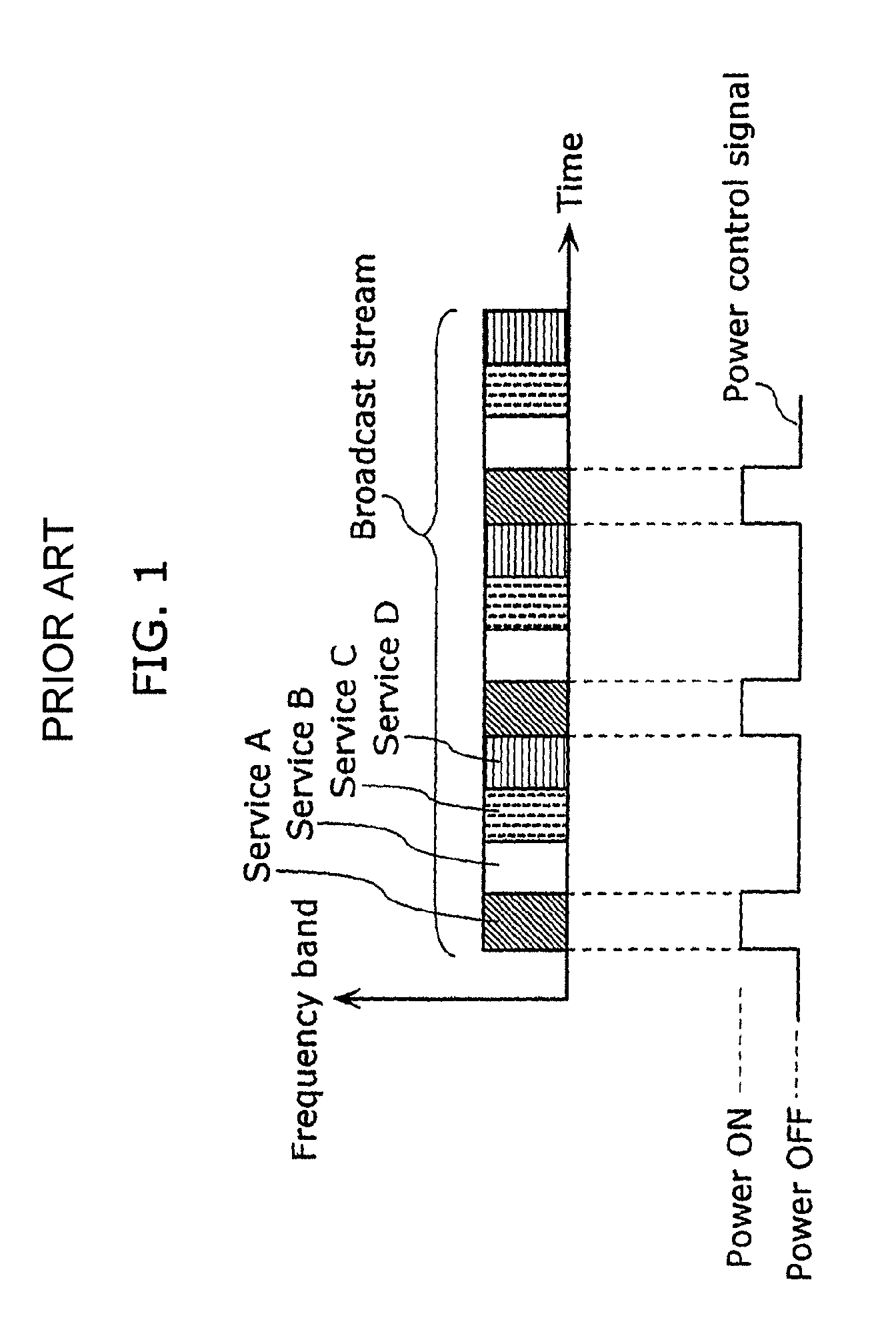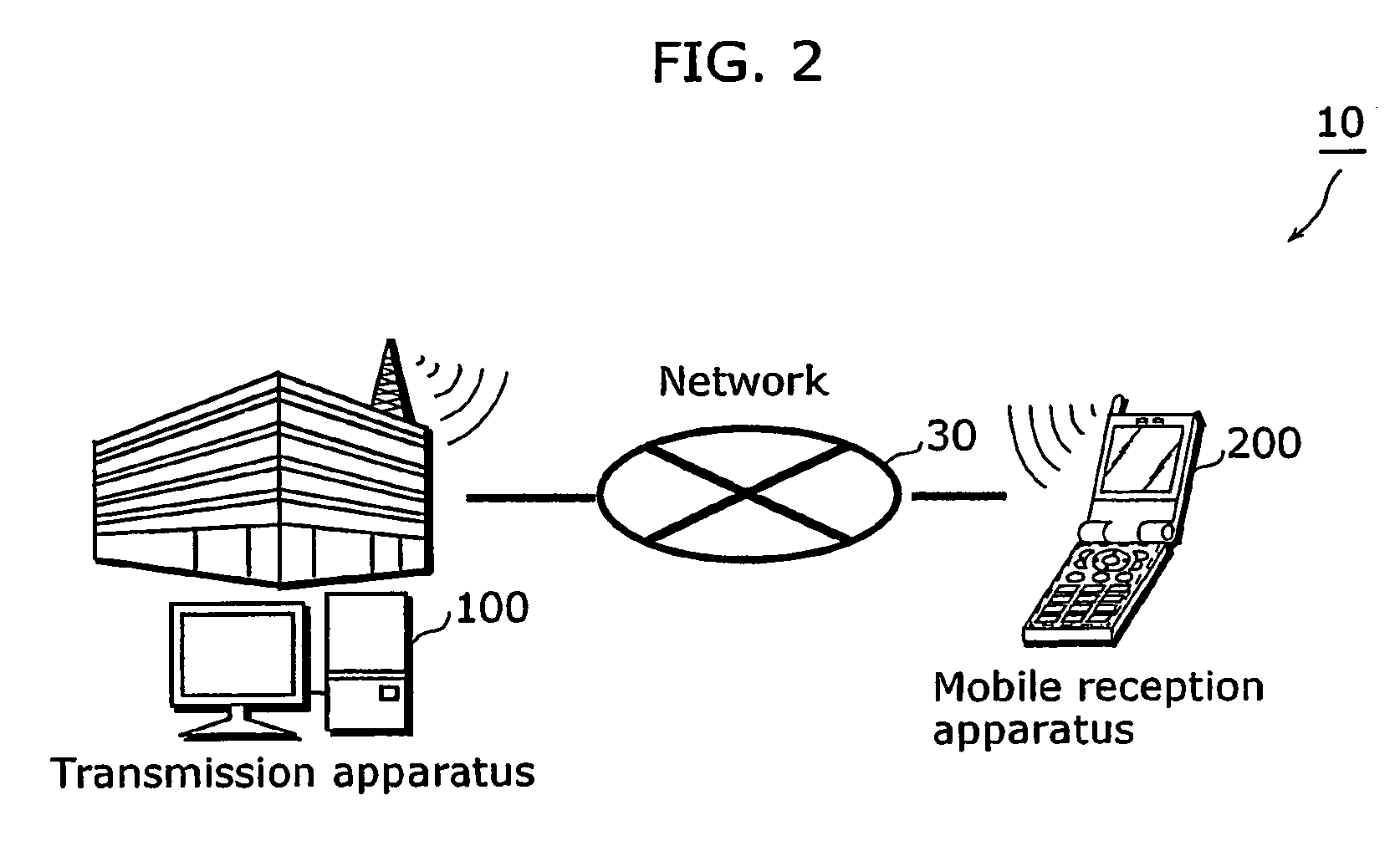Digital broadcasting system and digital broadcast transmission and reception method
a digital broadcasting and transmission system technology, applied in the field of digital broadcasting systems, can solve the problems of difficult terminals to receive long-time broadcast services continuously, large power consumption,
- Summary
- Abstract
- Description
- Claims
- Application Information
AI Technical Summary
Benefits of technology
Problems solved by technology
Method used
Image
Examples
first embodiment
[0048]FIG. 2 is a schematic diagram of a digital broadcasting system 10 according to the present embodiment. As shown in FIG. 2, the digital broadcasting system 10 includes a transmission apparatus 100 and at least one mobile reception apparatus 200, and these apparatuses are connected with each other via a network 30.
[0049]The transmission apparatus 100 generates a broadcast stream by multiplexing sources (which are also referred to as contents) for supplying various services to a user (which is also referred to as a viewer), and transmits the broadcast stream to the network 30.
[0050]The mobile reception apparatus 200 is a mobile phone including, for example, a digital broadcast tuner, a liquid crystal panel and a speaker. This mobile reception apparatus 200 receives a broadcast stream via the network 30, decodes it, and displays the contents of the service selected by the user on the liquid crystal panel or the like.
[0051]FIG. 3 is a block diagram showing schematically the functio...
second embodiment
[0115]The above description is given of the first embodiment in which the window width of the prediction window signal S3 is fixed. A description is given below of the second embodiment in which the window width of the prediction window signal S3 is gradually expanded if the reception condition is not improved.
[0116]FIG. 12 is a block diagram showing the functional structure of the burst prediction unit 315 in the present embodiment.
[0117]Note that in FIG. 12, the same reference numbers are assigned to the same components shown in FIG. 8 of the first embodiment, and the description thereof. Is not repeated here.
[0118]As shown in FIG. 12, the pulse generator 901 can set from outside the prediction window width of the prediction window signal S3, namely, the value of the pulse width. The counter 903 counts the number of pulses of the count clock S4, and outputs the count value into the pulse width register 902. The pulse width register 902 calculates the pulse width value based on the...
third embodiment
[0125]FIG. 15 is a block diagram showing the functional structure of a mobile reception apparatus 1100 according to the present embodiment of the present invention. In FIG. 15, the same reference numbers are assigned to the same components shown in FIG. 4 of the first embodiment, and the description thereof is not repeated here.
[0126]In FIG. 15, the mobile reception apparatus 1100 includes a VCO unit 1101 and a phase comparison unit 1102.
[0127]The VCO unit 1101 is a voltage control oscillator which changes the oscillatory frequency by controlling the voltage according to an inputted VCO control signal, and generates a count clock S4.
[0128]The phase comparison unit 1102 compares the phases of the burst synchronization signal S1 and the count clock S4, converts the phase difference into a voltage value, and outputs it as a VCO control signal. When the phases are compared, the loop gain of the count clock S4 is adjusted by the ΔT information S2, and therefore the accuracy of phase comp...
PUM
 Login to View More
Login to View More Abstract
Description
Claims
Application Information
 Login to View More
Login to View More - R&D
- Intellectual Property
- Life Sciences
- Materials
- Tech Scout
- Unparalleled Data Quality
- Higher Quality Content
- 60% Fewer Hallucinations
Browse by: Latest US Patents, China's latest patents, Technical Efficacy Thesaurus, Application Domain, Technology Topic, Popular Technical Reports.
© 2025 PatSnap. All rights reserved.Legal|Privacy policy|Modern Slavery Act Transparency Statement|Sitemap|About US| Contact US: help@patsnap.com



